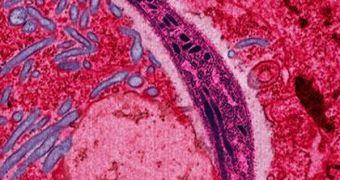The US Defense Advanced Research Projects Agency (DARPA) has just awarded a team of experts at the Biodesign Institute with a $5.3 million grant or studying the spread of infectious diseases.
The work is to be especially focused on doing this on the battlefield, to protect warfighters deployed in operations theaters around the world.
During deployment servicemen and women are at risk of suffering exposure to biological agents that may lead to various types of outbreaks of infectious diseases.
What DARPA wants is to study how the pathogens causing the conditions spread, so that they can then develop methods of counteracting the infections.
As such, they selected a group of scientists from the Biodesign Institute, which is located at the Arizona State University (ASU). The team here will be awarded the money over a period of two years.
If possible, the BI group is also to develop a potential therapeutic method for protecting the soldiers, says expert Stephen Albert Johnston, the leader of the research team.
Generally, producing a commercially available therapeutic takes a decade or so before it finally makes its way from the drawing board to the counters.
“Half of this period involves all the research and development of the therapeutic, the chemistry to make it, and so on,” explains Johnston, who is also the director of the BI Center for Innovations in Medicine.
“The other half is all the clinical trials testing and FDA approval,” he adds. The US Food and Drug Administration needs to ensure that no long-lasting side effects occur from using the new drugs.
What the group plans to do is reduce the first stage of this process, the R&D part, to just a week. The study will be conducted as part of DARPA's Accelerated Critical Therapeutics program.
Johnston’s research team is uniquely qualified to participate in this endeavor, given that the group has already developed technologies that allow it to conduct investigations in record periods of time.
“Our idea is to screen a large library of possible pathogens, identifying a broad class of effective binders, Chris Diehnel says.
He is an ASU assistant research professor. “We would then produce stocks of peptides to be kept waiting in the wings, so that when we have a live fire test, the unknown pathogen can be screened to identifying several low binding affinity peptides,” he goes on to say.
“These we will rapidly assemble into a synbody, targeting that pathogen specifically,” Diehnel concludes.

 14 DAY TRIAL //
14 DAY TRIAL //